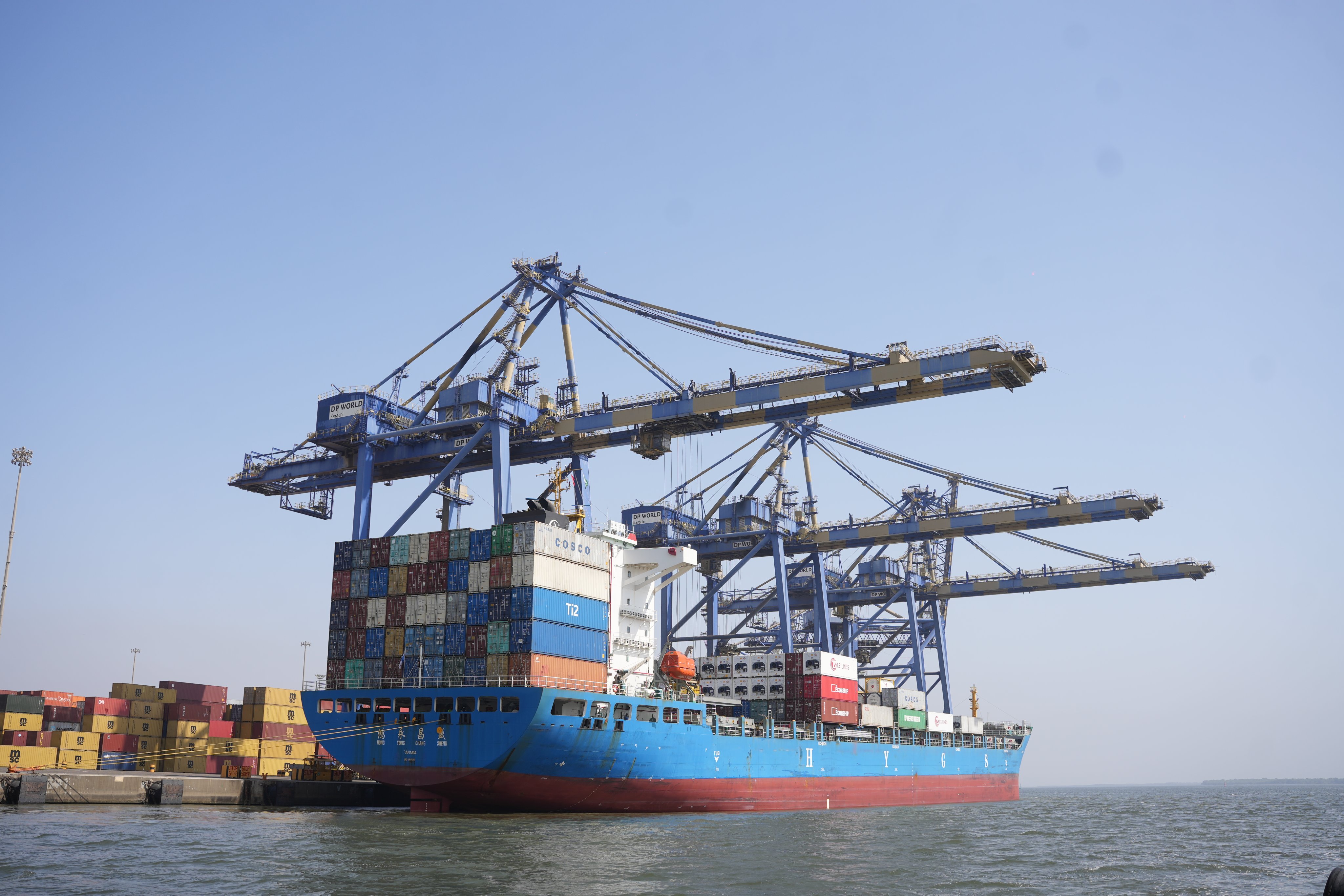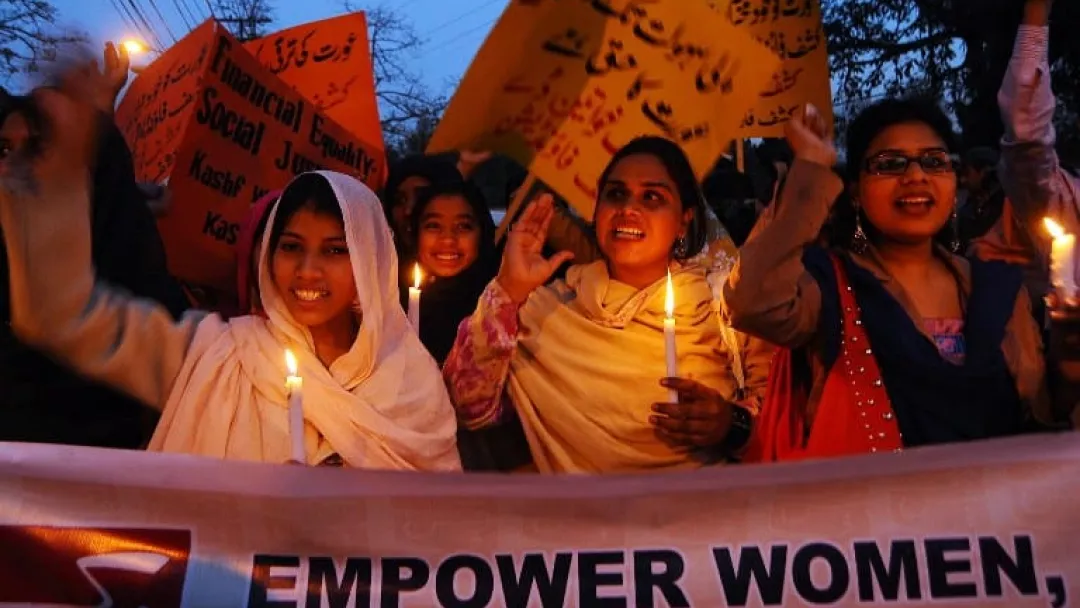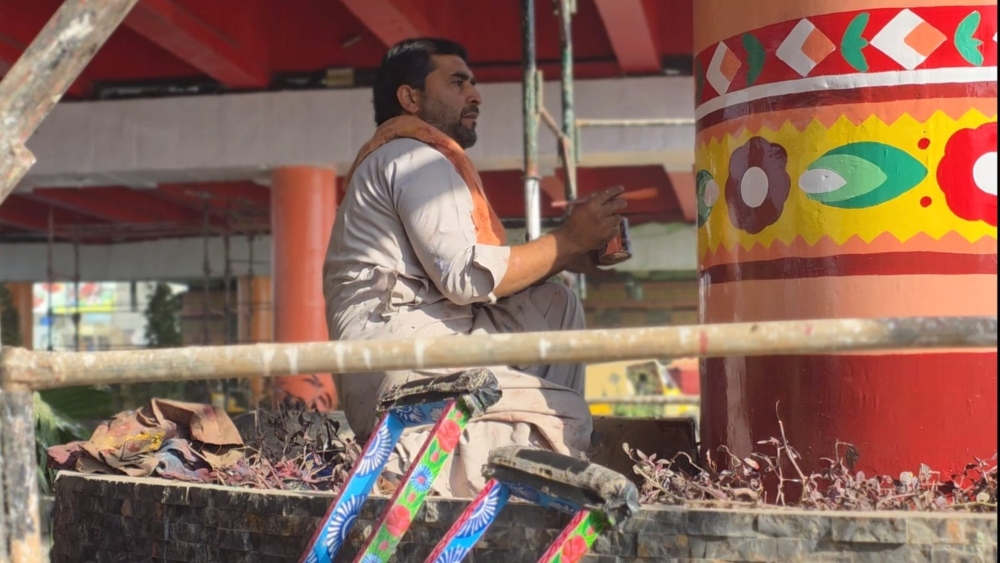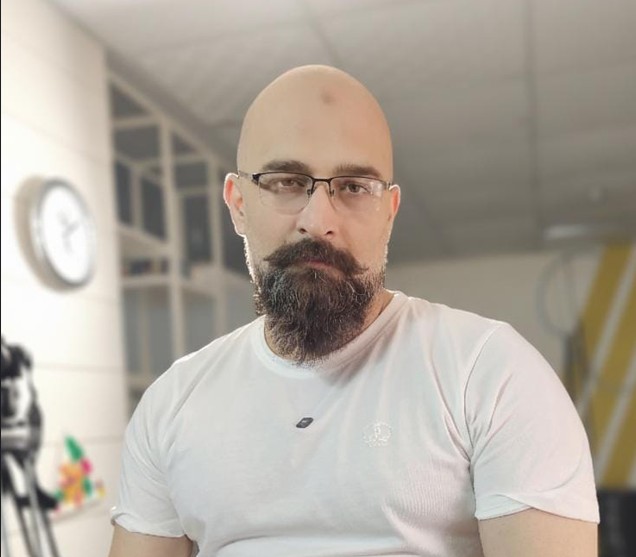PESHAWAR: Siyar Khan stands atop a shaky scaffold, balanced above the roaring chaos of Peshawar’s Ring Road. Paintbrush in hand, he adds a final stroke to the gray flyover before beginning his descent. It is only when he climbs down, slowly, deliberately, that his struggle becomes visible.
Once on the ground, he reaches for his crutches.
They are not ordinary crutches. They are vibrant splashes of red, yellow, and electric blue, decorated in the same truck-art motifs that made Siyar famous.
He painted them originally for customers with disabilities. Now, fate has willed that he must use them himself.
“When you are destined to fall, you fall,” he told Pakistan TV Digital with a calm, almost casual acceptance. But as he settles on a charpai in his workshop, greeted warmly by fellow painters, the truth becomes clear: Siyar may have been injured, but his spirit hasn’t bent an inch.
Master of moving canvases
For decades, Siyar dominated one of Pakistan’s largest and most iconic canvases: the Bedford truck. Since the early 1990s, he has transformed mechanical giants into rolling murals, layering peacocks, falcons, flowers, and poetry across their frames.
But when the coronavirus pandemic brought Pakistan’s transport network to a standstill, Siyar’s world shrank overnight. There were no trucks on the road, and no work for the artists who painted them.
Instead of resigning himself to the crisis, Siyar reinvented his craft.
“My field changed from Truck Art to ‘Truck Art Products’,” he recalled, pouring tea for his guests with the precision of a man who has spent a lifetime steadying his hands.
“I started painting clay pots, mobile covers, and purses. Suddenly, I wasn’t just a mechanic’s painter anymore.”
Teapots replaced truck doors. Lanterns replaced bumpers. His bold patterns migrated from highways to living rooms, reaching an entirely new audience.
Global stage, painful contrast
The pivot didn’t just keep Siyar afloat; it thrust him onto the global stage. He speaks proudly, though modestly, of invitations to the Dubai Expo, commissions for murals inside the Canadian and Thai embassies in Islamabad, and recognition from Lok Virsa, the country’s national heritage institute.
Yet with every international appreciation comes a reminder of home’s indifference.
“Foreigners look at our work and see a masterpiece,” Siyar said, frustration softening his voice.
“If an artist makes a portrait for a foreigner, they pay hundreds of thousands. But a local? They won’t even pay Rs5,000 [$17.70]."
"It is very simple: there is no value for the artist here.”
This is the dilemma of Pakistan’s folk artists: globally admired, locally overlooked. While “phool patti” art is celebrated as a cultural export, its practitioners often struggle to make ends meet.
Siyar dreams of changing that narrative. He wants a Pakistan where art is not dismissed as an indulgence, but respected as a profession. Where, as he put it, “holding a brush is as dignified as holding a stethoscope.”
'I still work hard'
Back in the workshop, the smell of paint thinner mingles with chai. Siyar picks up a brush and adds one last flourish to an old truck bumper. A nostalgic connection to his past life on the open road.
His fellow painters watch quietly; they know his story better than anyone.
He rarely mentions his achievements unless asked. Awards, expo invitations, government commissions, they are footnotes in his mind, not trophies.
What he seeks is simpler: dignity for his craft.
“I don’t let it get me down,” he said, adjusting his painted crutches as he prepares to stand. “I struggle even on these broken legs. I still work hard.”
As he walks away, sunlight catches the neon blossoms on his crutches, illuminating them in sharp colour against the concrete around him.
In that moment, they are more than support. They are a metaphor for his life.
Siyar Khan has taken something associated with pain and limitation and turned it into art, proving that you don’t need strong legs to stand tall; you only need vision, resilience, and color.
.jpg)





.jpg)
.jpg)
_20040228.png)
